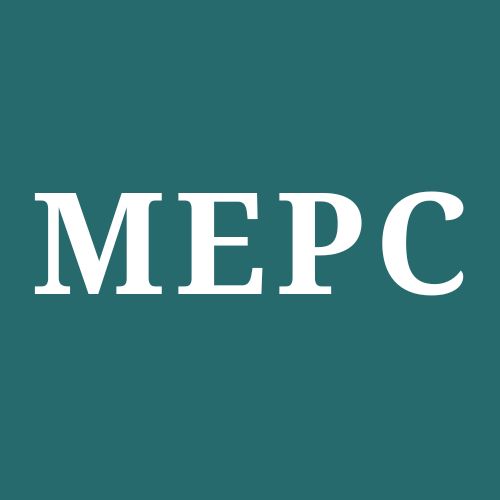The July 29 murders of three young girls in Southport, England have incited weeks of riots in the city and across the country, perpetrated by far-right agitators and fueled by anti-immigration and Islamophobic sentiments. Despite the clear messaging—including assaults on mosques, anti-Islam chants, and even members of parliament suggesting the phrase “allahu akbar” be criminalized—media descriptions of the riots and their perpetrators have often been sanitized.
Research from a leading UK thinktank, Royal United Services Institute (Rusi), found that violence from the far-right “is often classified as mere ‘thuggery’ or hooliganism,” according to The Guardian, rather than extremism or terrorism. Such framing undermines the severity of the threat posed by its perpetrators and “downplaying the ideological implications also contributes to a skewed public perception of extremism.” At the same time, similar acts motivated by Islamic extremism are more likely to be “swiftly labeled as terrorism.”
The study revealed “troubling double standards in how society perceives and responds” to the two types of extremism.
While the UK faces this wave of violence, the US has been grappling with the rise of far-right extremism for years. The decades-long shadow of al-Qaeda’s September 11 attacks has shaped the image of terrorism in the minds of the American public and policymakers, but, despite the media portrayals, the biggest domestic threat facing the country in recent years is that of right-wing domestic extremism.
ISLAMOPHOBIA
Since 2001, the belief among Americans has grown that Islam is more likely to lead to violence than other religions, notably along partisan lines. The number of Muslims saying that they have experienced discrimination has also increased in the same time frame, while being rated as one of the most negatively viewed faith groups in the United States.
And despite years of improvement, a recent Brookings poll found that the American public’s views towards Muslims, and Islam generally, have dropped notably since 2022, and “prejudice against them remains higher than any other religious, ethnic or racial group.”
These sentiments have developed despite the fact that, from 1994-2020, 57 percent of all attacks were perpetrated by right-wing terrorists, compared to 15 percent by religious terrorists, which includes but is not limited to Salafi-jihadists like the 9/11 attackers. Of note is the fact that Al-Qaeda, the primary enemy of the War on Terror and in operation in places around the world, has not conducted a major attack on US soil since that time.
It’s well understood that media drives perception. In 2019, researchers found that “attacks perpetrated by Muslims receive of disproportionate amount” of coverage: though accounting for only 12.5 percent of attacks, half of the news coverage was focused on the plots. Stereotyping in this way not only “reinforces cultural narratives about what and who should be feared,” fueling in part the discriminatory sentiments that have gripped much of the population over the last two decades, but have also been shown to play a part in the radicalization of individuals who have carried out attacks.
The effects of this are twofold: Muslims in the United States face increased discrimination; and other, often more prevalent, threats to American citizens can be overlooked. Indeed, “such misperceptions may prevent the acknowledgment and addressing of other pressing security threats that have a factually rooted basis.” Though granted less media coverage than Islamic terrorism in the 20-odd years since 2001, far-right extremism is currently a greater threat.
FAR-RIGHT EXTREMISM
What is the far-right, who falls under the umbrella, and how did the movement get here?
The motives of the far-right perpetrators include white supremacy, neo-Nazism, anti-government beliefs, anti-abortion sentiments, anti-immigration views, and more. Oftentimes, these attacks are portrayed in their coverage as one-off incidents, “lone wolf” actions, or any other term to connote that the act is carried out by an aggrieved individual. In many cases, this is accurate. However, it is also true that there are networks that promote these ideologies.
A report by the Center for American Progress laid out the connections between the major players in what they call the “Islamophobia megaphone,” an information ecosystem that generates, justifies, and promotes falsehoods and misconceptions to influence public opinion. From the funders to the “experts” to the media, including prominent right-wing media personalities like Rush Limbaugh, Sean Hannity, Mark Levin, and Brigitte Gabriel, and news organizations like Fox News, the Washington Times, and the National Review, the network is designed to amplify “fear and misinformation” to the public.
At the same time that these outlets push Islamophobic narratives, they downplay the nature of the far-right extremist threat.
A prime example of this can be found in the framing of Fox News segments in the past decade. Despite the empirical rise in attacks perpetrated by those classified as far-right, Fox coverage can be seen as not only presenting with greater focus and more intense rhetoric acts carried out by Islamic or far-left extremism, but even deflecting far-right violence onto either of the two former groups. An analysis of the network’s coverage, including through its main draws like Sean Hannity, Tucker Carlson, and Laura Ingraham, finds these persistent themes of threat construction, deflection, and downplaying.
The analysis shows that “Fox News’ contextualization of domestic terror incidents varied depending on the perpetrator.” From 2012-2018, there was “a focus on the global nature of radical Islam, and references to 9/11,” while 2018-2022 “saw the emergence of a new terror threat: Antifa, and the leftwing.”
“Notably absent from these contextual frames were rightwing terror incidents, which by and large remained within episodic frameworks that emphasized fringe actors, super minority movements, and in some cases avoided the designation of domestic terror entirely.”
Fox News is one of the most-viewed cable networks in the United States, with its content reaching millions of people every day via television and social media. The fundamental mischaracterization of the domestic extremist threat presents an inaccurate and biased image, which impacts public opinion and policy to undermine the safety of individuals and society at large.
In 2009, a Department of Homeland Security (DHS) briefing was sent to law enforcement groups around the country warning about the potential for an increase in right-wing violence as a result of the economic recession, the election of America’s first Black president, and the recruitment potential of veterans returning from the wars in Iraq and Afghanistan. But right-wing media pundits, like the aforementioned Rush Limbaugh, reacted with outrage, which eventually led to a public apology from the DHS head and even the dissolution of the team that produced the report. What were the assignments these analysts were moved to? Studies on Muslim extremism.
The report had identified a problem that would soon metastasize—in every year since 2011 (except 2013), right-wing plots have accounted for more than half of all attacks; in the last five years, they have been responsible for 87 percent of all terrorism fatalities.
COVERAGE AND ITS IMPACT
The far-right threat has gained exposure in recent years, appropriately recognized as the most pressing domestic threat to the United States. Yet it is still less sensationalized in the media and, in fact, legal system than is Islamic extremism.
A study from the Institute for Social Policy & Understanding, a research organization based in Washington, D.C., found that “perpetrators identified as Muslim also had qualitatively different media coverage than perpetrators not identified as Muslim,” receiving twice as much coverage for acts actually carried out. For those acts that were “foiled,” they received seven and a half times as much coverage as non-Muslim perpetrators.
In addition, “Muslim-perceived perpetrators received harsher legal charges and longer prison sentences than their non-Muslim counterparts.” In fact, the sentences sought by prosecutors against Muslim perpetrators were three times the length of those sought against non-Muslim perpetrators, despite similarities in the plots of ideologically driven violence.
Compounding this is the issue of “conflation between ideology and identity.” For Muslim perpetrators, these two are often tied together; i.e. the fact that the person is a Muslim is perceived to be the basis for any violence committed. The study cites right-wing perpetrators as a comparison: the ideology of white supremacy, for example, is less often associated with the identity of being white. The application of this framing on “some groups more than others reinforces prejudices that an identity of belonging to a particular faith makes one more predisposed to committing acts of violence.”
Such a mindset “makes it easier to attribute collective guilt and leads to public acceptance of discriminatory policies,” a factor driving Islamophobia in the country. Even though the risk of Islamic extremism has abated over the last two decades, the prevalence of discrimination has not. In 2022, 62% of Muslim adults reported experiencing at least one incident a year, the most of any religious group.
Islamophobia endangers not only Muslims, but, like any other prejudice, the public as a whole. Those that hold a prejudice against one group are more likely to hold it against others, and also more likely to “approve of discriminatory policies” and limitations of civil liberties when the country is perceived to be under threat.
When the various elements of American society, including the media, legal system, and public, reconcile the biases with the facts of Islamic vs. far-right extremism, the concern of the far-right’s growing threat can be more adequately addressed and issues of extremism confronted with appropriate and equal intensity, creating a safer and more equitable society for all.
(Banner image: Anthony Crider)

